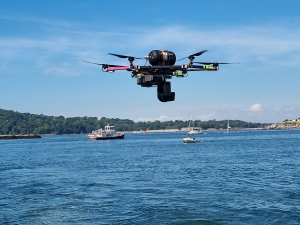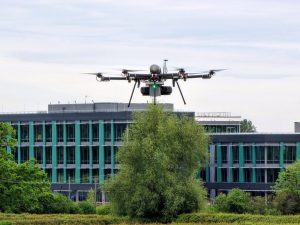Hydrogen fuel cells for unmanned aerial vehicles
Flight time and payload limitations are key factors for UAV operators. When compared to batteries, hydrogen fuel cells win. Their high-energy density enables a fuel cell powered UAV to fly 3 times further than a battery powered equivalent.
Applications of hydrogen fuel cells for unmanned aerial vehicles
The prospect of using unmanned aerial vehicles for last mile delivery is driving the commercial UAV industry forward, and there are companies successfully deploying now. IE-SOAR fuel cells improve the offering with a safer solution and lower TCO.
Parcel delivery
In comparison to batteries, fuel cells have a higher energy density resulting in more serviceable customers or heavier payloads/packages. Generate your own fuel from clean energy and refill in minutes.
Linear inspection
Unmanned aerial vehicles are used increasingly for data collection. They offer a cheaper, faster and safer alternative to traditional methods.
The longer flight range enabled by fuel cells equals less downtime and increased efficiency – a fraction of the cost of a manned helicopter equivalent.
Cinematography
Film the whole event in one flight.
Unmanned aerial vehicles are heavily used in the film industry, but the need to land and recharge means important footage can be missed. Fuel cells enable you to stay in the air for longer with less downtime and continuous footage.
Agriculture
Boost the efficiency of your operation by eliminating battery changes. With increased range, you can optimise land coverage when surveying and monitoring.
Military surveillance
Longer range and longer flight time equals higher quality data, better situational awareness, and geospatial intelligence.
LiDAR and mapping
Map larger environments thanks to reduced maintenance and downtime. With fewer stops to refuel, unmanned aerial vehicles spend longer periods in the air. This means fewer calibration runs and more efficient operations.









